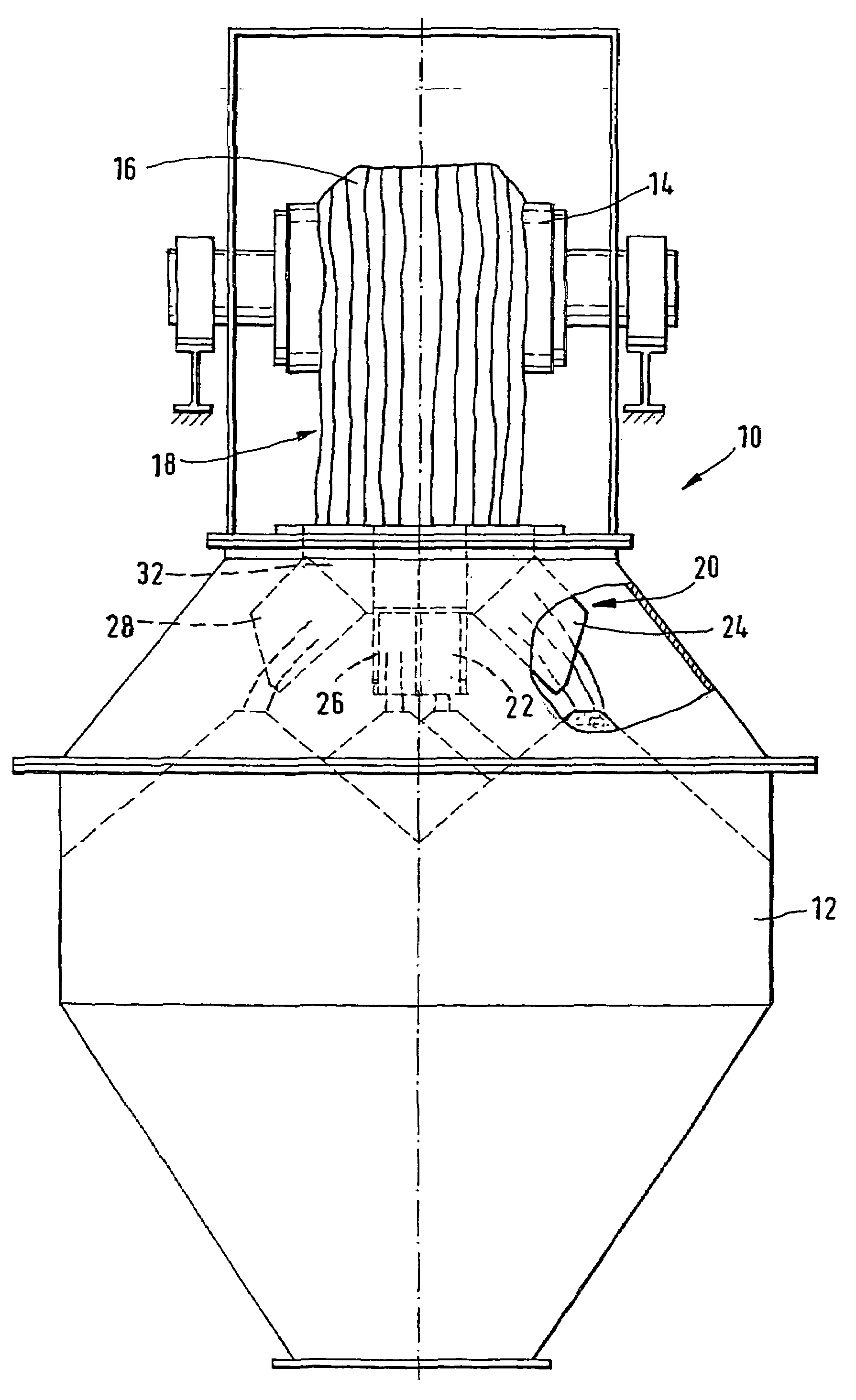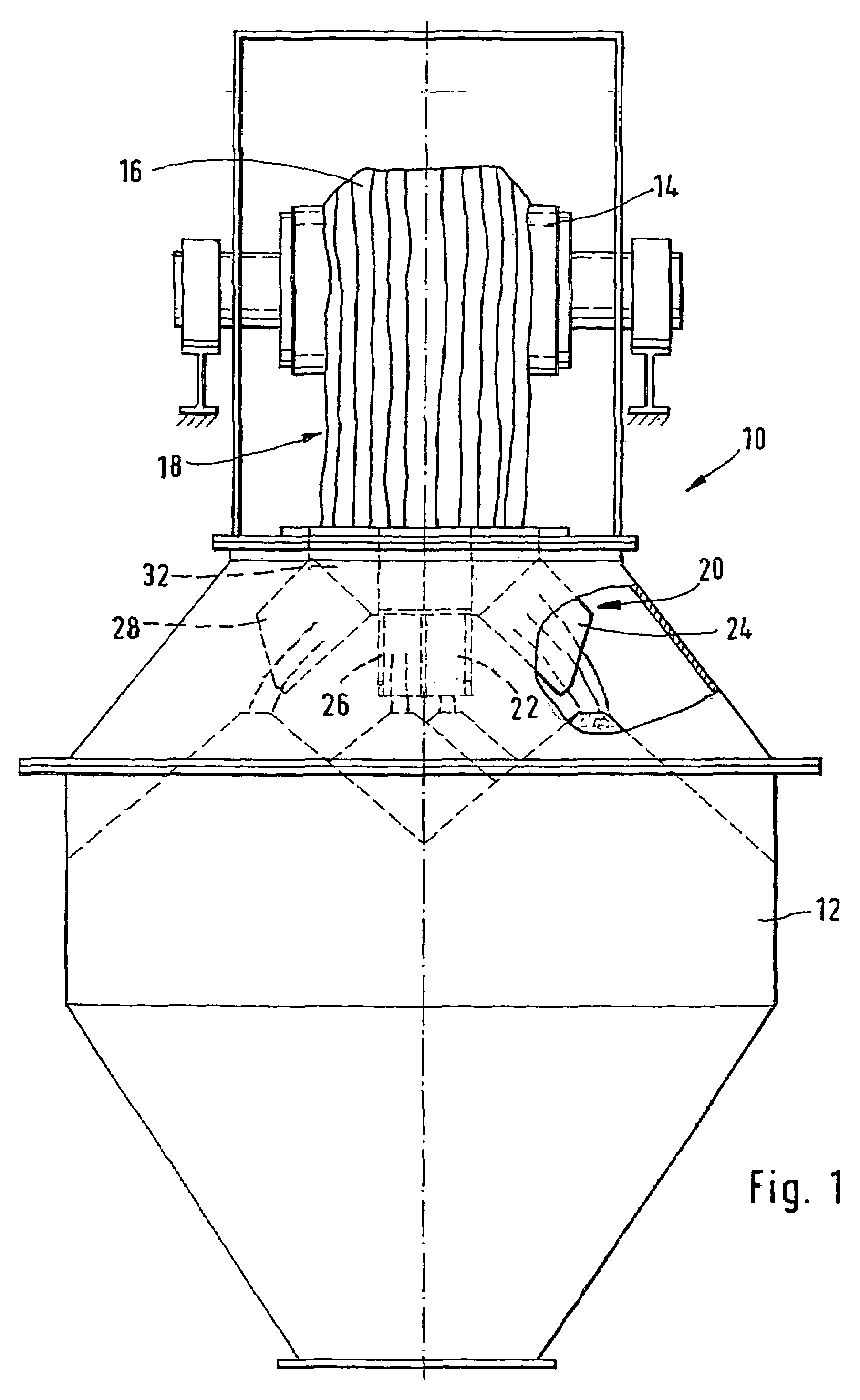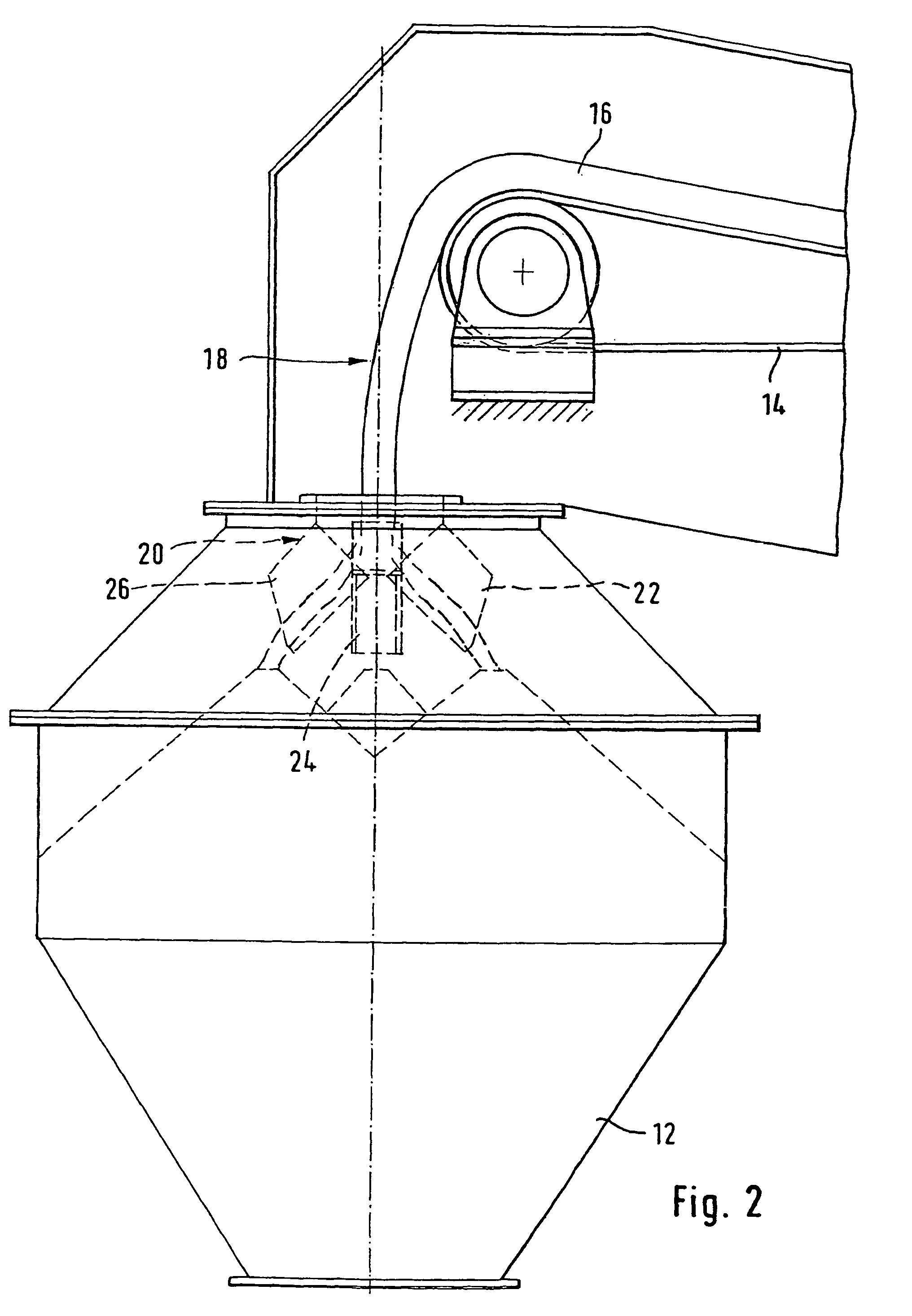Hopper-loading method and installation
a technology of hopper and hopper body, which is applied in the direction of charging manipulation, lighting and heating apparatus, furnaces, etc., can solve the problems of difficult to distribute charge materials uniformly in the hopper, affecting the uniformity of the distribution of materials, so as to achieve the effect of better distribution of materials in the hopper
- Summary
- Abstract
- Description
- Claims
- Application Information
AI Technical Summary
Benefits of technology
Problems solved by technology
Method used
Image
Examples
Embodiment Construction
[0033]FIGS. 1 and 2 respectively show a front view and a side view of an installation 10 for loading a hopper 12. The installation 10 comprises a conveyor belt 14 which conveys the loose material 16 over the hopper 12. The loose material is tipped out more or less over the central axis of the hopper 12 and therefore falls in the form of a curtain of material 18 into the top opening of the hopper 12.
[0034]To ensure good distribution of the loose material within the hopper, a device 20 for distributing loose material is arranged in the top opening of the hopper 12.
[0035]The device 20 comprises several chutes 22, 24, 26, 28, which are oriented in distinct directions so as to tip the loose material out into different regions of the hopper. The different chutes are mounted side by side in a top frame 30, so as to form a box 32 which is open at the top and divided into several adjacent compartments by walls 34 of the chutes. The chutes are produced in such a way that the walls delimiting ...
PUM
| Property | Measurement | Unit |
|---|---|---|
| flow rates | aaaaa | aaaaa |
| height | aaaaa | aaaaa |
| particle size | aaaaa | aaaaa |
Abstract
Description
Claims
Application Information
 Login to View More
Login to View More - R&D
- Intellectual Property
- Life Sciences
- Materials
- Tech Scout
- Unparalleled Data Quality
- Higher Quality Content
- 60% Fewer Hallucinations
Browse by: Latest US Patents, China's latest patents, Technical Efficacy Thesaurus, Application Domain, Technology Topic, Popular Technical Reports.
© 2025 PatSnap. All rights reserved.Legal|Privacy policy|Modern Slavery Act Transparency Statement|Sitemap|About US| Contact US: help@patsnap.com



